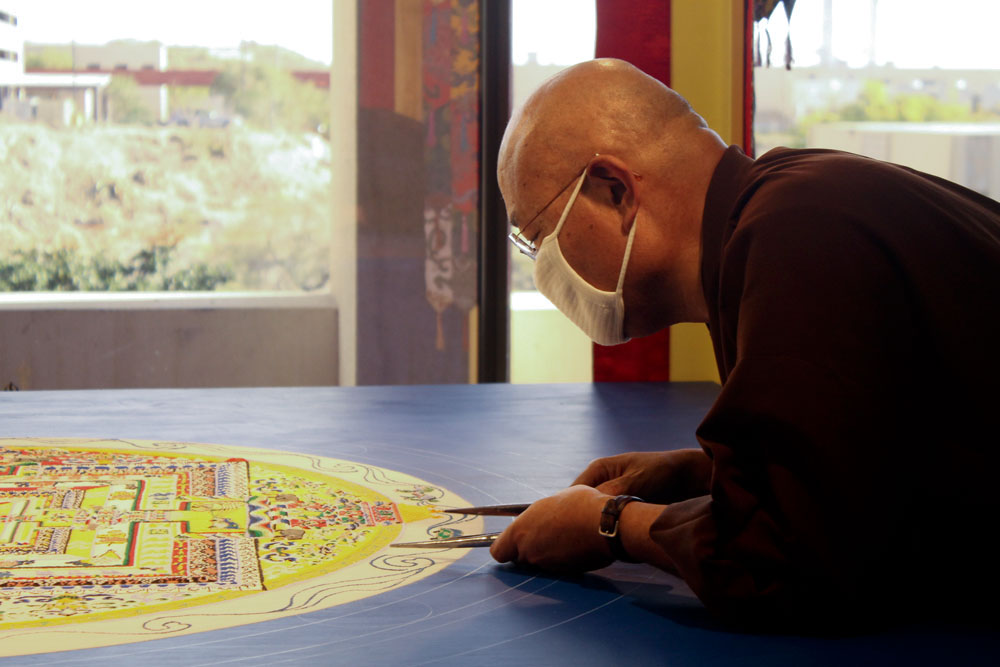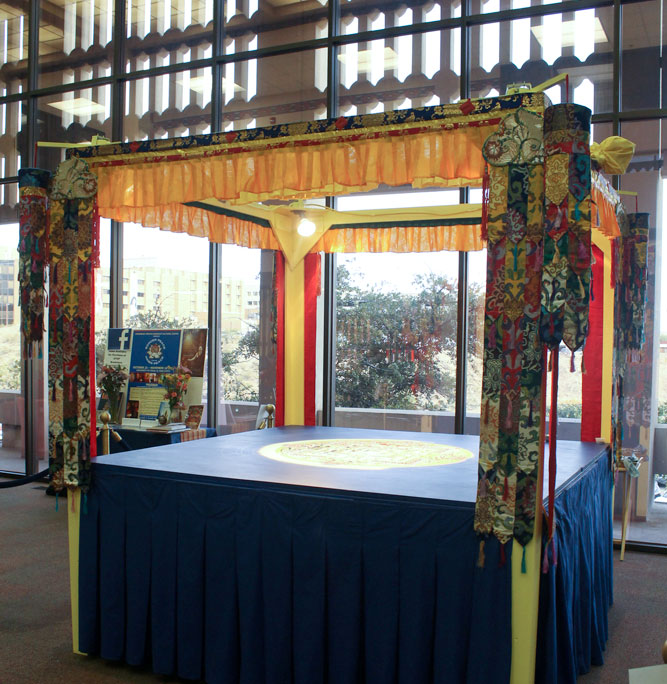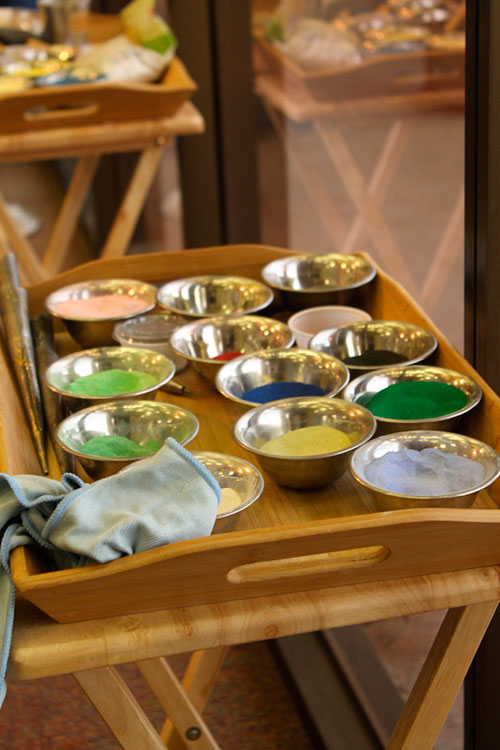
Venerable Losang Samten. (Luisana Duarte/Borderzine.com)
EL PASO – Dressed in brown robes and a white dust mask covering his mouth, a Buddhist monk hunches over and inspects the mandala – a circle decorated with multi-colored sand he is in the process of constructing on a wooden scaffold.
The monk then straightens up, takes a deep breath and hunches back down. He meditates about peace in the borderland while scraping a few grains of colored sand off a metal tube and depositing them on the forming artwork.
The monk creating the mandala, the Venerable Losang Samten, is a retired professor and spiritual director at the Tibetan Buddhist Center of Philadelphia and has been visiting El Paso for over 20 years, almost since he first came to the United States.
“I was born in Tibet, but when it was attacked I moved to India with my family, I was 11 years old,” Samten said. In India he entered the Tibetan Namgyal Monastery.

The Sand Mandala is being displayed at the Student Union Building East. (Luisana Duarte/Borderzine.com)
For a little over a month now, Samten begins his work at 9:30 a.m. with a half hour of prayer open to the community. He then continues with the slow process that is the construction of the Kalachakra Mandala at the Student Union Building East at UTEP.
Samten explained that the purpose of this particular mandala is to bring peace to the surroundings thinking especially about the neighbor city Juarez, where he remembers constructing another mandala.
“I created another mandala in a beautiful museum in Juarez,” he said. “However there has been a lot of pain in that city.”
Since “meditation and prayer” are two of the pillars of mandala construction, Samten explained “You have to make sure you are doing it for the right reasons. Not for the fame, or the money, so you have to know why you are doing it all the time.”
This specific mandala, also called a Kalachakra Mandala has over 720 elements in the design.
“This is a very important mandala, because it represents life,” Samten said. “You can vary the color of the elements, but the design stays the same.”
The creation of a mandala is a long process, which begins with the sketching of the elements wherever it will be constructed. The sand then is poured in layers from the center out. Depending on the size, this step can range from weeks to months.
For Samten, this process took a little over a month; he worked almost everyday from 9:30 a.m. until 5 p.m., depending on the Union Building schedule. During the day, Samten also spoke to students who approached him with questions about his work.
“Professors also come in with their classes and I talk to them,” Samten said with a smile. “They many times are very curious about what I am doing.”

Colored sand. (Luisana Duarte/Borderzine.com)
After the mandala is finished the mandala is dismantled in a ceremony. Samten explained that the mandala couldn’t be left as is for a long period of time.
“There is a word that we [Buddhists] use – impermanence,” Samten said. “This means that nothing stays the same, everything changes.”
He then again talked about Juarez and the pain that has been present in the city. “But everything changes, that is impermanence,” Samten said with hope.
When this happens Samten said, “everyone is invited to the dismantling ceremony; they can take sand for their healing ritual or blessings. I hope that many come.”
However, he added that some exceptions could be made.
“Dr. Natalicio came by and I told her that if they want, they can keep the mandala,” However, Samten explained that the mandala will eventually need to be destroyed.
The finished sand mandala is currently on exhibition at the Student Union Building East at UTEP during regular hours in the second floor’s Bhutan Lounge.


